Everyone knows buying a boat is only a small part of the expense. There’s ongoing costs for maintaining a boat along with all the maintenance projects that quickly add up. This list can become big and daunting if you don’t properly manage it. Here’s some things we do to help keep it under control.
Separate the needs from the wants
You can walk on any boat and quickly start identifying things you want to update and things you need to replace. The top three priorities should always be:
- Keep the crew healthy and safe
- Keep the water out of the boat
- Have a method to move the boat
Anything that affects those three are instantly top priority needs and should be dealt with as quickly as possible. Everything else needs to be tracked and continually prioritized.
Keeping track of the wants
Your want list, like most sailors, will expand out quickly. Best to have a notepad close by at all times to jot these down as you think of them. Have a separate area where you start to categorize and prioritize. You will want to review these, on a regular basis. Maybe some of these wants will transition into needs as they may become a threat to the top three priorities. Or maybe a Christmas or your birthday is approaching and you want to start giving out subtle hints.
Some physical methods of doing this:
- Notebook on the boat (my favourite is a small lined Moleskine)
- Whiteboard on the boat (temporary notes)
- Sticky notes (careful, can loose random notes)
Some electronic ways of doing this:
- Excel or Google Sheets
- Evernote
- Google Keep
- Tablet (iPad / Android) task list or notepad
- Trello
- Pivotal Tracker
Unfortunately, Lori and I are very different in how we like to track things. She’s very physical, loves her paperback books, written check lists, and sticky notes on everything. I’m the opposite, I use Google Keep, Google Documents, Google Photos, and Trello. And I have a background in agile software development so I love my Kanban board in Trello!
Shane’s electronic method
Let’s start with the quickest way to add something to my list. I take a quick photo or video. I always have my phone on me so it’s super easy for me to take a really quick photo of something or to take a quick video with me talking to my phone as a reminder. These go into Google Photos that I always review and organize. I then move these into another electronic list. For all my wants and needs it goes into Trello.
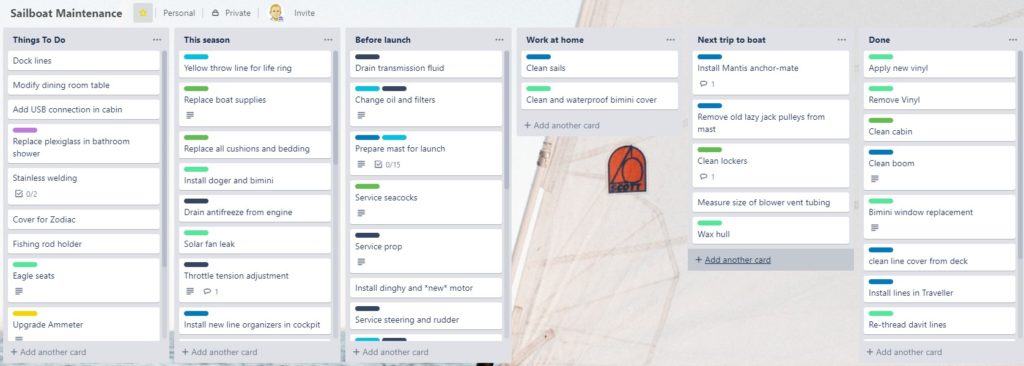
Each thing in my list is added as a card and each card can be dragged up or down or moved left or right into a different column. I’ve organized these cards into several columns:
Backlog / Things To Do – this contains my wish list of all the things we would like to do. This will eventually become a huge list of all my wants and desires. There is no filter for this, add whatever comes to mind.
This season – cards that are a higher priority, and something we’ve decided that we would like to do this season are moved into this column.
Before launch – is a temporary column to hold all of the items we need to do before launch. Will create new temporary columns for different events. For example, when we plan our next trip we will create a new temporary column for that trip to keep track of everything that needs to be done for that trip.
Work at home – keeps track of the cards we’ve decided that need to be done right now and we should be working on at home.
Next trip to boat – keeps track of the cards we’ve picked to do during our next trip to the boat.
Done – self explanatory. It feels good moving things to this column. And then when we go in and re-prioritize things up and down in a column or move tasks from one column to another we also archive this list so it doesn’t get too big.
As you can see things go from low priority in bottom left corner to high priority in the top right corner. And things go from high level, rough ideas on the left. And are eventually broken down and split up into detailed individual tasks that can be completed within a day as it moves to the right.
Here’s an example. We know we need to prepare our mast before launch. And that’s all I originally wrote. As we research and think about it more we start to add more details to the card. This is the details behind the third card in my Before Launch column.

Before we head out to the boat I might break this down into different cards for the day. This also helps me ensure I have all the tools and supplies needed for each task.
Adding labels to a card help me find them later. I’ve created a label for each category of system on the boat and also added a few “buy” labels. This allows me to filter on them at any time. When I’m at the marine store I look at all the cards that I’ve used the “buy marine store” label to remind me what I should consider picking up while I’m there.
Entering these cards early also provides a great way for me to collect initial research on a project. On the left hand side it’s usually a large idea that needs to be planned out. As I find information I add links, photos and ideas as comments to the card.
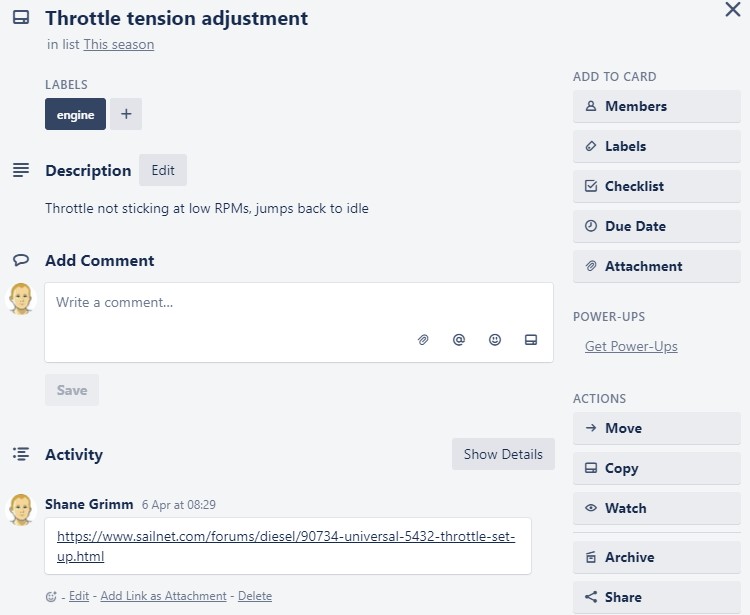
Trello can be accessed from any machine with a web browser and also provides apps for iOS and Android. So I have access to this list from anywhere.
I also maintain a Google Drive that I sync with my laptop and my phone. This contains all my boat documentation and reference material. Google Photos is used for all my videos and pictures and I also use Google Keep to write temporary notes.
Lori’s physical method
Lori tolerates my digital methods, but for us to work together I need to move over to the dark side of hand written notes and lists. Before we head out to the boat I’ve recreated some of the items as post it notes that we go over together and prioritize. This is thrown up onto the wall in our workshop at home.
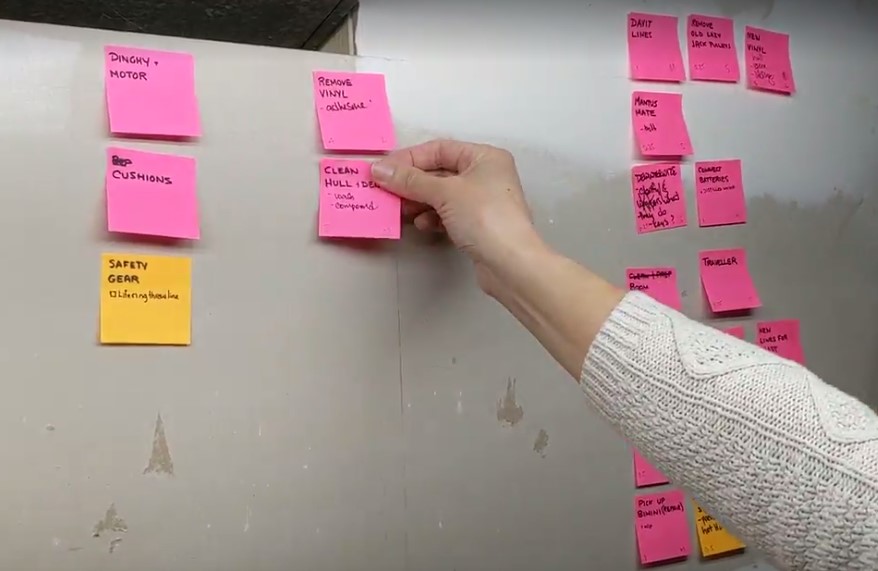
From our larger pile of post-it notes we distill it down and agree on what we are going to do on our next trip to the boat.
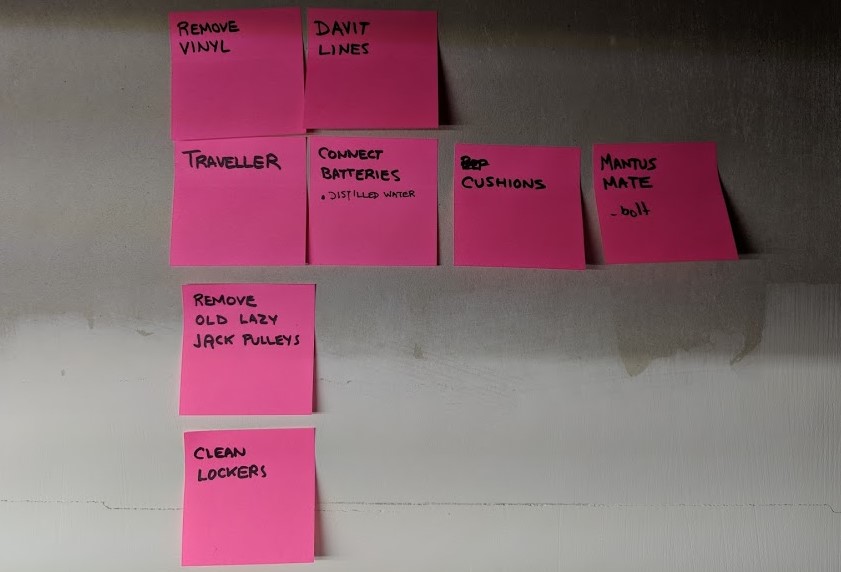
Lori also has pages of notes and lists that she keeps and adds to. We go over these as well and try to synchronize our two lists. This is a painful redundancy but we’ve found this caught a few things that we’ve missed.
Conclusion
Which method is better? I would like to argue that mine is, but I won’t. I know everyone has their own method for keeping themselves organized and I believe everyone should stick to the method they are most comfortable with. Many will argue Evernote is better than any of my options above, others will argue a spreadsheet, others will have a moleskin notebook with all their notes meticulously organized. This is why we haven’t tried to consolidate our lists into one, we’ve both realized it’s too big of a change so we will continue to do what we feel comfortable with and will continue to spend time synchronizing our separate lists.
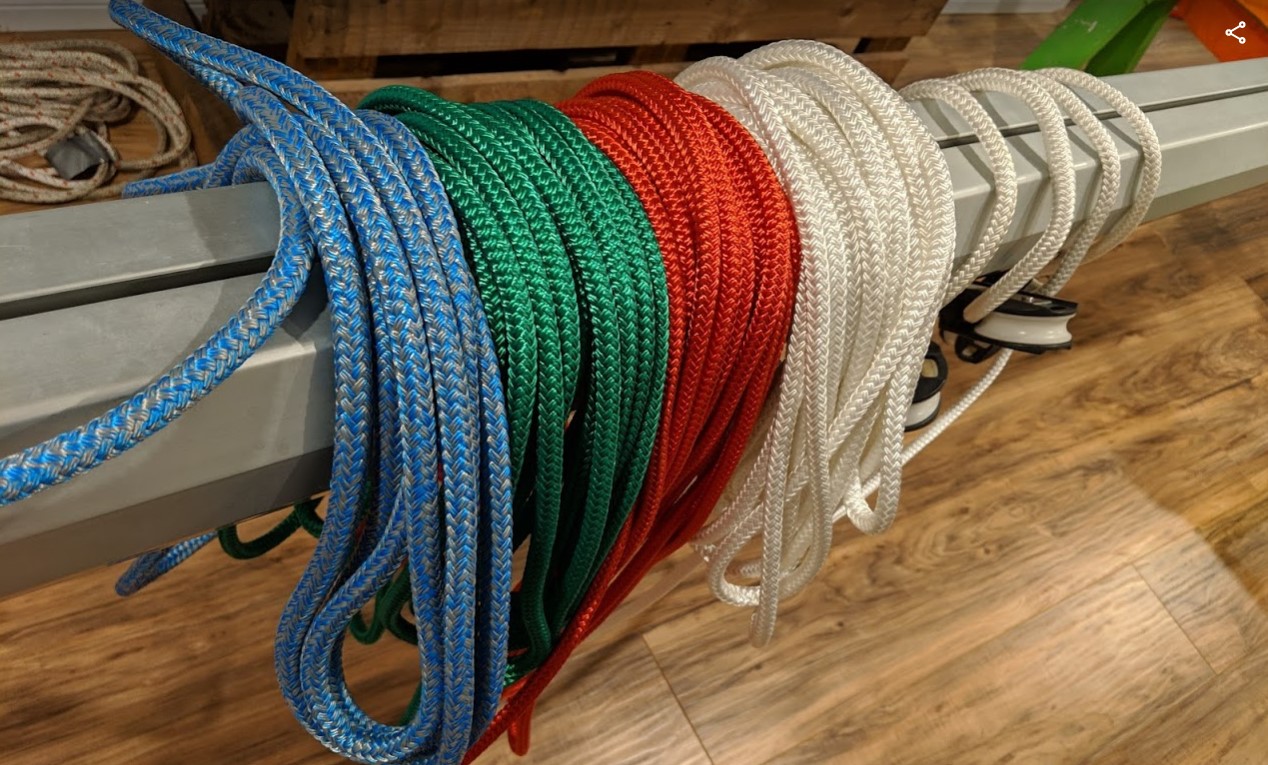
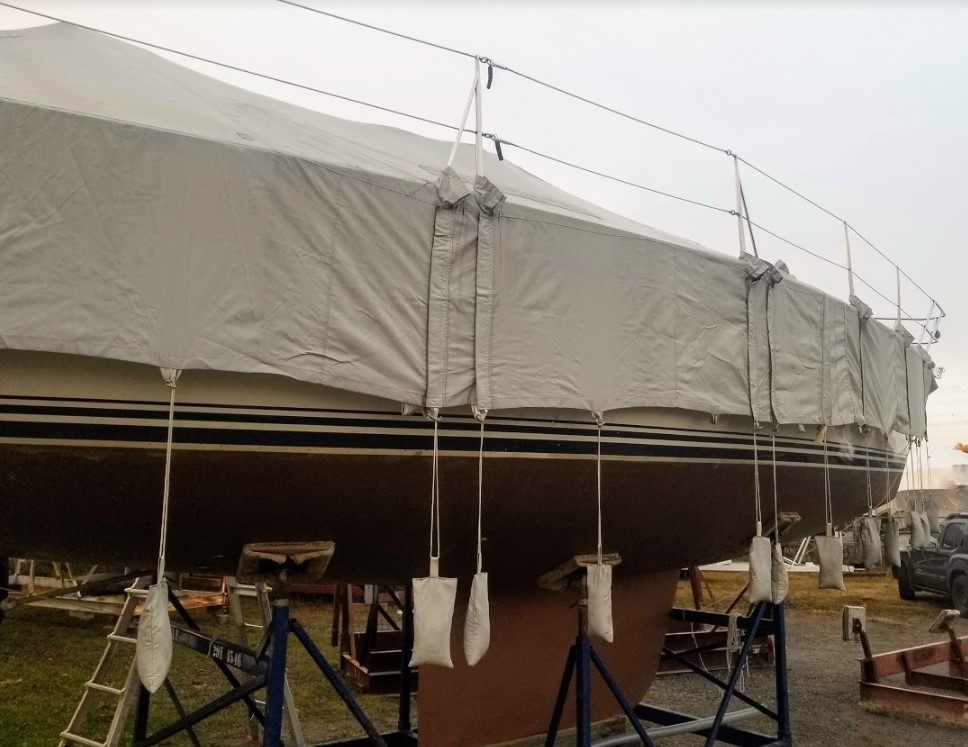
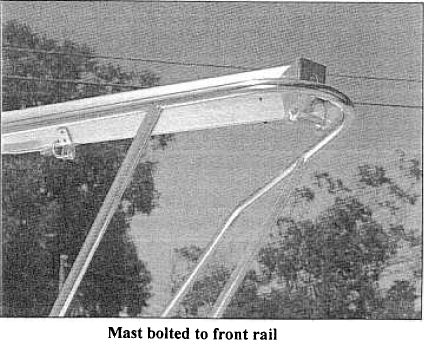
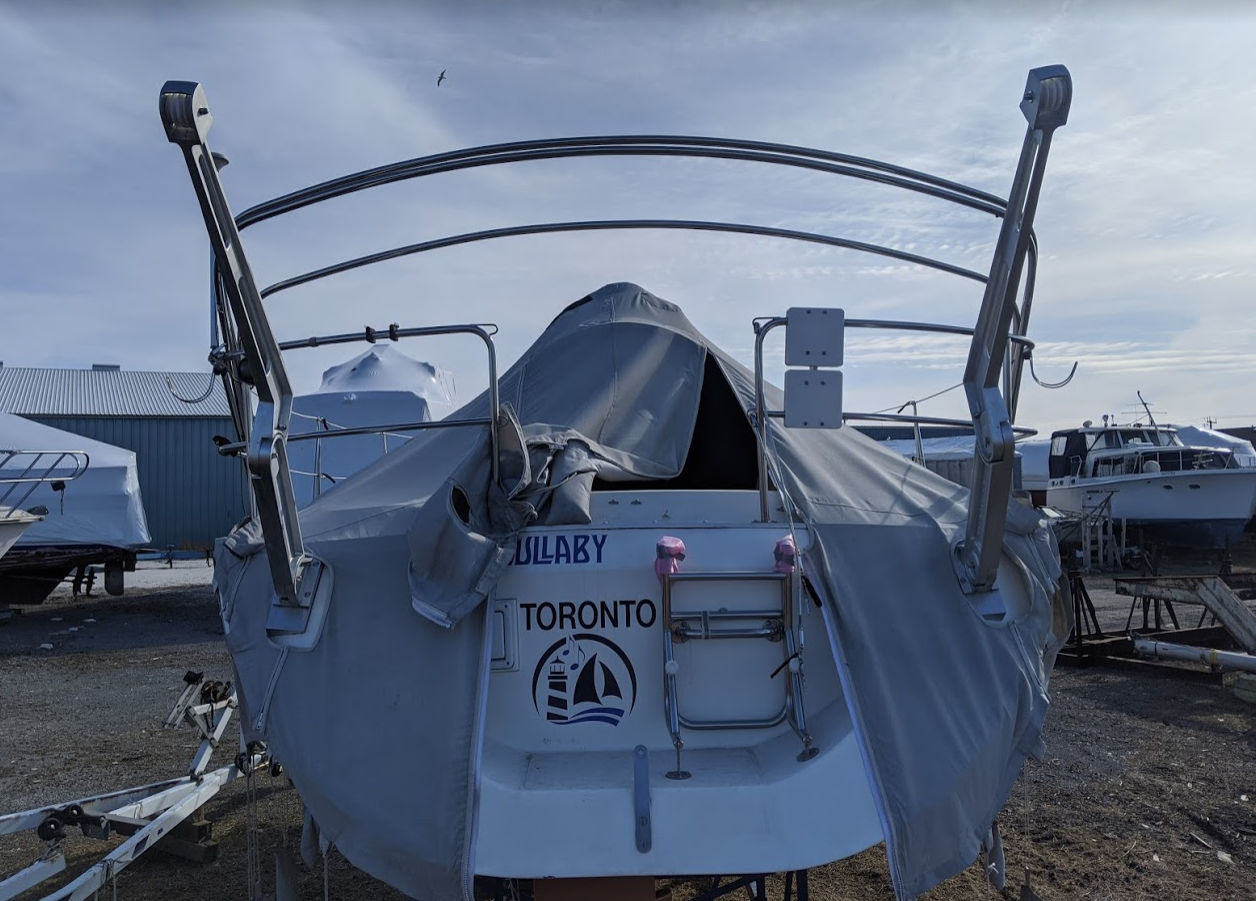
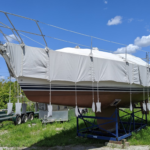
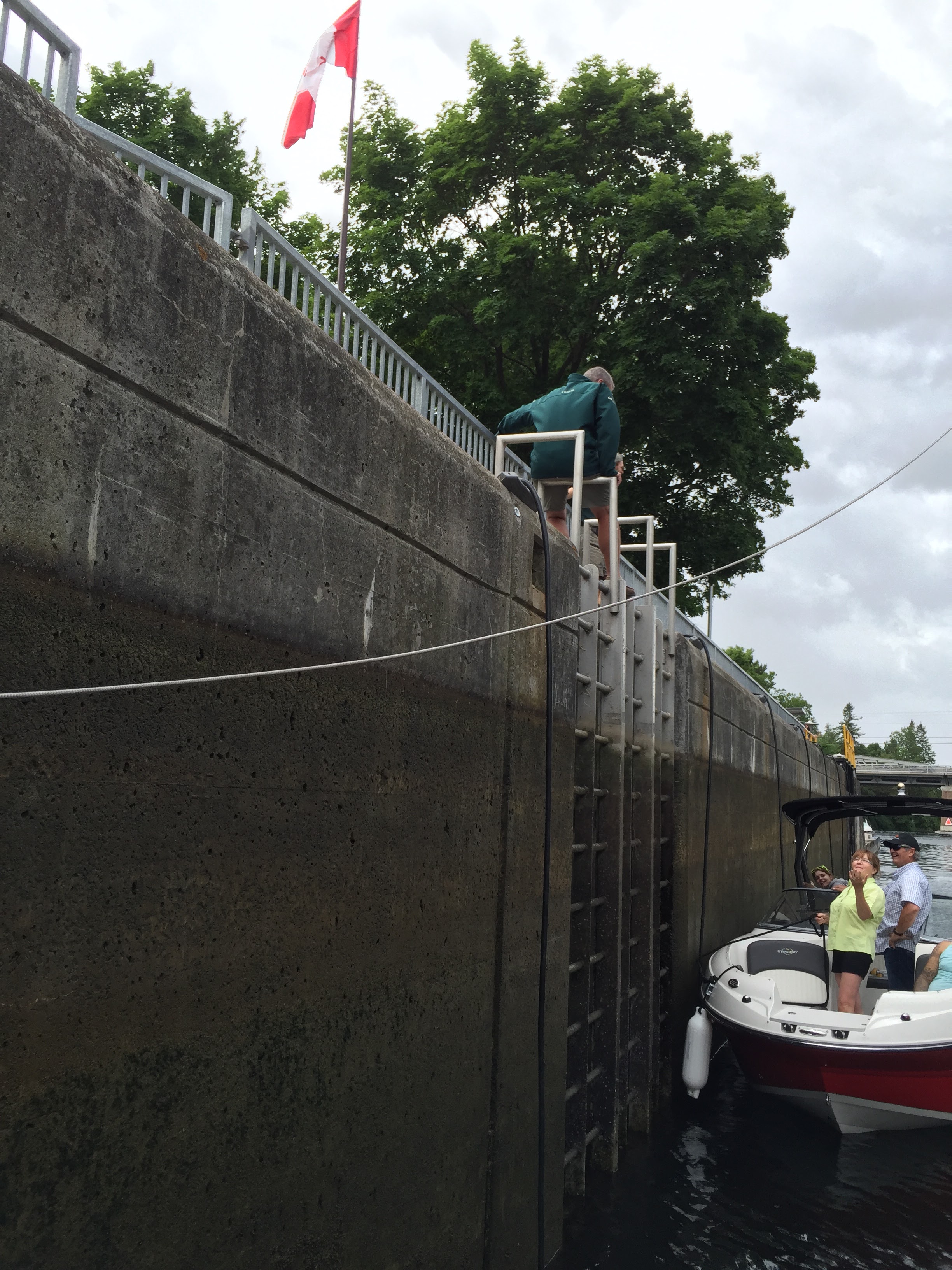
1 Pingback